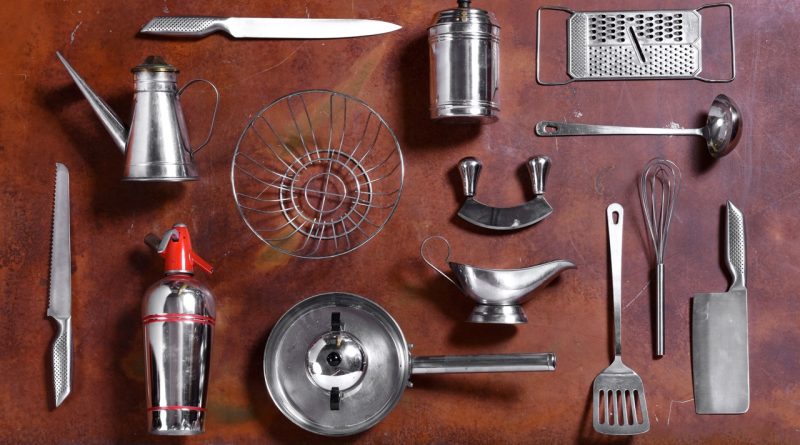The Ergonomic Logic Behind Zwilling’s Knife Design
The world of culinary tools is vast, but few items are as essential as a well-designed knife. Zwilling, a brand synonymous with quality and precision, has invested significant effort into the ergonomic design of their knives. This article explores the underlying principles of ergonomics in knife design, focusing on how Zwilling achieves comfort, efficiency, and safety through thoughtful craftsmanship. Whether you’re a professional chef or a home cook, understanding these elements can enhance your culinary experience.
Understanding Ergonomics in Culinary Tool Design
Ergonomics is the science of designing tools and workspaces to fit the human body and its movements. In the context of culinary tools, particularly knives, this means creating products that not only feel good in hand but also promote proper technique and reduce the risk of injury. Zwilling’s design philosophy places a significant emphasis on these principles, ensuring that each knife is tailored to the natural grip and movements of the hand.
The key to Zwilling’s ergonomic approach lies in the balance and weight distribution of their knives. A well-balanced knife allows for smoother, more controlled cutting motions, which reduces fatigue during prolonged use. The careful selection of materials also plays a crucial role; lightweight yet strong materials ensure that users can maneuver the knife effortlessly, making even the most intricate tasks easier to manage.
Moreover, Zwilling incorporates feedback from professional chefs and culinary experts into their design process. This collaboration allows them to understand the specific needs and challenges faced by users in real-world kitchen environments, leading to innovations that enhance comfort and usability. By prioritizing ergonomics, Zwilling not only improves the efficiency of their knives but also promotes a more enjoyable cooking experience.
Key Features of Zwilling Knives That Enhance Comfort
One of the standout features of Zwilling knives is the handle design. Made from high-quality materials like synthetic resin or wood, these handles are crafted to fit comfortably in the hand, providing a secure grip that minimizes slippage. The contours of the handle are shaped to accommodate the natural resting position of the fingers, allowing for a relaxed grip that reduces hand fatigue over extended periods of use.
Furthermore, Zwilling incorporates a bolster into their knife design, which acts as a transition between the blade and handle. This feature not only provides stability and balance but also protects the user’s fingers by preventing them from slipping onto the blade. The bolster also adds weight to the knife, enhancing control and precision during cutting tasks, which is especially beneficial for novice cooks who may struggle with technique.
Another key aspect is the variety of handle sizes and shapes available, catering to different hand sizes and preferences. This customization ensures that every user can find a knife that fits them perfectly, further enhancing comfort and usability. By focusing on these ergonomic features, Zwilling empowers cooks of all skill levels to perform their best in the kitchen.
How Blade Shape Influences Cutting Efficiency and Safety
The shape of a knife blade is crucial not only for its cutting efficiency but also for safety. Zwilling knives are designed with specific blade profiles that cater to various cutting techniques and food types. For instance, a chef’s knife typically features a curved blade that allows for a rocking motion, making it ideal for chopping herbs or vegetables. This design promotes a natural cutting motion that requires minimal effort, reducing the risk of strain or injury.
Moreover, the edge geometry of Zwilling knives is meticulously crafted to enhance sharpness and durability. A thinner, sharper edge requires less force to cut through food, allowing for cleaner cuts and reducing the likelihood of slipping. This is particularly important when handling slippery ingredients like tomatoes or fish, where control is paramount. By focusing on blade shape and edge design, Zwilling not only improves efficiency but also prioritizes user safety.
Additionally, Zwilling employs innovative technology in their blade manufacturing processes, such as ice-hardening techniques that enhance hardness and flexibility. This ensures that the blades maintain their sharpness longer, reducing the frequency of sharpening needed. A well-maintained knife is inherently safer, as a dull blade can cause more accidental slips and cuts. By marrying form and function, Zwilling’s blade designs exemplify the importance of ergonomics in culinary tool safety and efficiency.
Choosing the Right Zwilling Knife for Your Cooking Needs
Selecting the right Zwilling knife involves understanding the specific tasks you’ll be performing in the kitchen. For general purposes, a versatile chef’s knife is an excellent choice, as it can handle a range of ingredients from vegetables to meats. Its ergonomic design ensures comfort during prolonged use, making it a staple for any kitchen.
If you’re focused on precision tasks like filleting fish or peeling vegetables, consider Zwilling’s specialized knives, such as paring or filleting knives. These knives feature narrower blades that allow for intricate cuts and detailed work. The ergonomic handles of these knives are designed to provide maximum control, ensuring that even the most delicate tasks can be executed safely and efficiently.
For those who frequently engage in bread-making or slicing, a serrated knife from Zwilling’s collection is indispensable. Its unique blade design allows for clean cuts through crusty bread or soft pastries without crushing them. By understanding your cooking style and needs, you can select the ideal Zwilling knife that enhances your culinary skills while prioritizing comfort and safety.
In summary, the ergonomic logic behind Zwilling’s knife design showcases the brand’s commitment to creating tools that enhance both comfort and efficiency in the kitchen. By focusing on the principles of ergonomics, the thoughtful design of handles, and the significance of blade shapes, Zwilling knives cater to a wide range of cooking needs. Whether you’re a novice or a seasoned chef, understanding these elements will not only improve your cooking experience but also ensure that you can enjoy the art of cooking safely and effectively.
